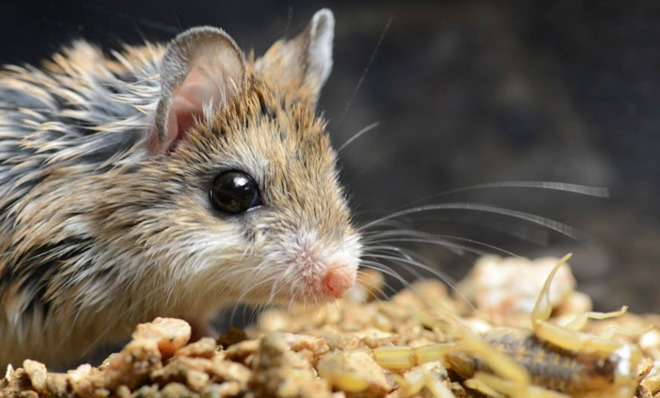The adorable mouse that's immune to scorpion stings
Here he comes to save the day!

Pain isn't any fun, but it's important.
It tells you when you're damaging your body, and helps you avoid stuff that might damage it in the future. It's why you don't keep your hand on a hot surface for too long, or jump up and down on a twisted ankle. It also tells you not to mess with the animal that just stung you, which is why many animals use venomous stings to keep deadly predators away.
Among these, the bark scorpion stands out. Native to the American Southwest, bark scorpions are known for having some of the most painful stings around. People who have been unlucky enough to get stung by one compare it to being branded with a hot iron, or having a cigarette put on out their skin — and then having a nail driven into the burn. The throbbing pain can linger for hours.
The Week
Escape your echo chamber. Get the facts behind the news, plus analysis from multiple perspectives.

Sign up for The Week's Free Newsletters
From our morning news briefing to a weekly Good News Newsletter, get the best of The Week delivered directly to your inbox.
From our morning news briefing to a weekly Good News Newsletter, get the best of The Week delivered directly to your inbox.
For all the hurt a bark scorpion can unleash on humans, the stings don't seem to matter much to grasshopper mice. These mice live in the same areas as the scorpions and regularly eat them. Scientists have observed these tiny rodents attack scorpions and get stung several times, only to pause for a moment before eating them for lunch.
The scorpions' venom, which can normally kill small animals by inflicting neurological damage, doesn't seem to have any effect on the mice. In fact, the mouse is immune to all six of the toxins found in the bark scorpion's venom, including the lethal variety. Plenty of animals have adapted to overcome the toxicity of their prey, but it's the grasshopper mouse's utter indifference to the scorpion's painful sting takes things one step further.
Neurobiologist Ashlee Rowe, from Michigan State University, and a team of researchers from around the country have recently figured out how the grasshopper mouse has adapted: A chemical in one of the mouse's pain receptors latches on to the venom molecules and prevents some of the pain receptors from activating, turning the venom into an anesthetic.
When a bark scorpion stings a regular mouse, the venom molecules attach themselves to a protein called Nav1.7 on a pain-sensing nerve cell. These proteins are ion channels, acting as gateways to the cells and moving sodium ions in and out of them. The venom forces Nav1.7 to open, which lets sodium ions flood in and causes the cell to initiate a pain signal. Once that pain signal starts, another channel called Nav1.8 maintains it and sends it to the brain, creating the sensation of pain.
A free daily email with the biggest news stories of the day – and the best features from TheWeek.com
Initially, the researchers thought that grasshopper mice might have evolved changes to their Nav1.7 channels that kept the venom from attaching to them or opening them. But after looking at how the venom and cells interacted, they found that the trick actually lies in Nav1.8, the channel that's supposed to keep that initial pain signal going.
The researchers found that Nav1.8 sends out amino acids (the building blocks of proteins) that attach to the venom molecules, causing the channel to get blocked up. While the pain signal might get started by Nav1.7, it doesn't get sent to the brain because Nav1.8 is using the venom to block the signal instead of broadcasting it. The message that the mouse should be feeling pain never reaches the brain.
Without Nav1.8 registering what would otherwise be pain signals, the mice are not only numb to the pain of the scorpions' stings, but pain from other sources, too. For a short time, the mighty mice feel nearly invincible.
Rowe and her team think that, with more understanding of the interactions between the venom and Nav1.8, they could be used as a blueprint for developing new painkillers for humans.


